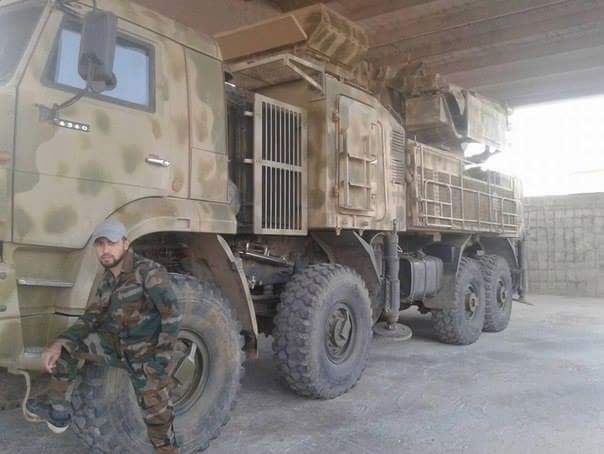BS.
The
S-400 Triumf (NATO:
SA-21 Growler), previously known as the
S-300PMU-3, is an anti-aircraft weapon system developed in the 1990s by Russia's Almaz Central Design Bureau as an upgrade of the S-300 family. It has been in service with the Russian Armed Forces since 2007. The S-400 air defence missile system uses four new missile types in addition to the missiles of the S-300PMU system: the very-long-range 40N6 (400 km), which combines active and semi-active radar homing, the long-range 48N6 (250 km) and the medium-range 9M96E2 (120 km), which are semi-active radar homing, and the short-range active radar homing 9M96E (40 km). The new anti-ballistic missiles 77N6-N and 77N6-N1 entered service in 2014, supposedly add inert/kinetic anti-ballistic capability to the system. The same missiles will also be used by the S-500, which has a clearly stated anti-ICBM role.
Types of targets the system is supposedly able to handle:
- Strategic bombers such as the B-1, B-2, FB-111 and B-52
- Electronic warfare airplanes such as the EF-111 and EA-6
- Reconnaissance airplanes such as the TR-1, U-2S
- Early-warning radar airplanes such as the E-3 and E-2
- Fighter airplanes such as the F-15, F-16, F-35 and F-22
- Strategic cruise missiles such as the Tomahawk
- Ballistic missiles (range up to 3,500 km)
"The system can engage all types of aerial targets including aircraft, unmanned aerial vehicles (UAV), and ballistic and cruise missiles within the range of 400km, at an altitude of up to 30km."
http://www.army-technology.com/projects/s-400-triumph-air-defence-missile-system/
The Almaz S-400 Triumf or SA-21 system is the most recent evolution of the S-300P family of SAM systems, initially trialled in 1999. The label S-400 is essentially marketing, since the system was previously reported under the speculative label of S-300PMU3. At least one report claims that funding for the development of the Triumf was provided in part by the PLA. The principal distinctions between the S-400 and its predecessor lie in further refinements to the radars and software, and the addition of four new missile types in addition to the legacy 48N6E/48N6E2 used in the S-300PMU2 Favorit. As a result an S-400 battery could be armed with arbitrary mixes of these weapons to optimise its capability for a specific threat environment.
The most detailed technical paper to date covering the S-400 was produced by Dr Alexander Lemanskiy, Chief Engineer on the S-400, Igor Ashurbeili, General Director, and Nikolai Nenartovich, Chief Engineer, of Almaz-Antey, published in the Russian language Vozdushno-Kosmicheskaya Oborona journal, No.3 (40), 2008
1. Unfortunately it lacks the detail of later Almaz-Antey disclosures on the S-300PMU2 Favorit, but does provide a good discussion of the rationale behind the S-400 design design, and its key design features.
Lemanskiy et al state that definition of the S-400 design was performed jointly by the designers and the Russian MoD, with specific capability foci in:
- Defeating threats at low and very low flight altitudes;
- Dealing with the overall reduction of target signatures resulting from the pervasive use of stealth technology;
- Dealing with the increase in target quantities resulting from the widspread use of UAVs;
- Applying all means to defeat advanced jammers employed by opponents;
- Surviving in an environment where PGMs are used widely;
- Accommodating an environment where an increasing number of nations are deploying TBMs and IRBMs.
Lemanskiy et al observed that several key imperatives were followed during the design process:
- An open system architecture with a high level of modularity, intended to permit follow-on capability growth in the design;
- Multirole capabilities and the capacity for integration with legacy IADS technologies;
- Suitability for the air defence of fixed infrastructure targets, as well as manoeuvre forces;
- Suitability for integration with naval surface combatants;
- The ability to exploit legacy missile rounds already in operational use;
- High operational mobility and deployability;
- High lethality and jam resistance;
There imperatives were applied to the design of configurations for the Russian Armed Forces and for export clients.
http://www.ausairpower.net/APA-S-400-Triumf.html






 their coming s400 wont work i think so
their coming s400 wont work i think so















